Philips Launch Evnia Gaming Monitor Brand Including 34″ QD-OLED, 42″ OLED and 34″ Mini LED Models
Originally published 22 October 2022, last updated 20 February 2023
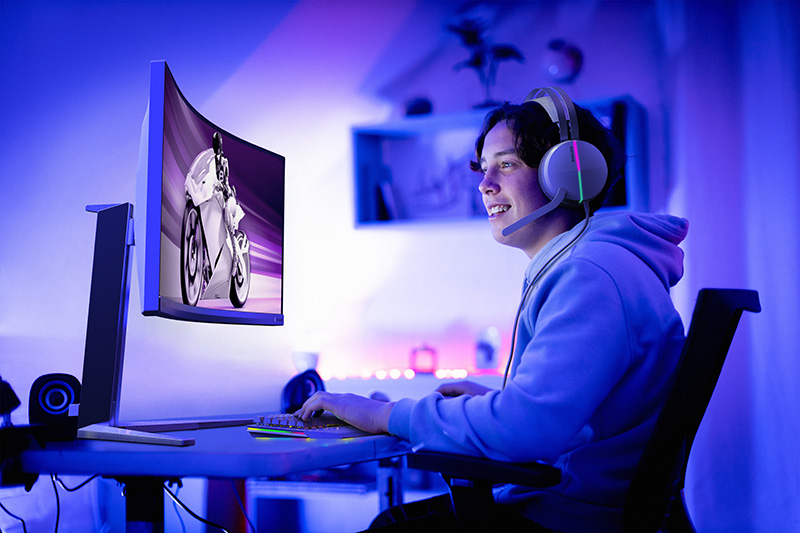
Back in October 2022 Philips launched their new Evnia brand of gaming monitors at their Worldwide press event in Paris, France. As Philips say, “Evnia aims to become the most welcoming gaming brand, diversifying the category by creating an enjoyable experience in combination with style.” Evnia is the company’s new brand of gaming monitors, as well as peripherals like mice, keyboards and headsets. There’s some interesting monitor models they are launching that we will break down below.
Background to the Evnia Brand
As the Philips press release states: “The word Evnia (Greek: Εύνοια) consists of eu (good) and nous (mind), which literally means “well mind” and “smart thinking”. Evnia is used as a word to show interest to support and protect someone or something. It’s often used in the context of luck. Everyone can be a gamer, and Evnia, true to the name, supports the joy of gaming for all.

The definition of a typical gamer is more diverse than ever – however, the stereotype that gaming is only for teenagers is still the norm. The need for a welcoming community required a brand that could embrace every gamer, making them feel truly part of the group. Starting from its unique design, Evnia differentiates from the crowd of spec-only-driven aggressive models, bringing back the joy and fun of gaming, keeping emotional benefits at the core.
The Evnia range reflects its mantra: “Reinvent the rules”. Far from the known gaming stereotype, Evnia adds freshness, premium and elegance to the mixture. From product lines to Ambiglow lights, it prioritizes emotional benefits as well as technical advantages. The sophisticated design fits every environment, being a perfect addition to the furnishing of a casual gamer lounge or a proper PC gaming set-up.”
New Evnia Monitor Ranges
Obviously of most interest to us at TFTCentral are the new monitors that the company announced. They explained that eventually there would be three series of monitors in the “good”, “better”, “best” categories of their 5000, 7000 and 8000 series. Being showcased and launched at the event were 1x 5000 series, 1x 7000 series models and 2x 8000 series models. You will see from the below that Philips didn’t take this opportunity to shorten and simplify the product names unfortunately.
All the models are focused on delivering high refresh rates and low input lag for gaming, and also include Philips’ ‘Ambiglow’ lighting system on the back of the screen which casts a glow on to your wall behind the monitor, and syncs the colours to the content being displayed on the screen. This is a step above plain old RGB lighting and is a nice feature, commonly found on the company’s TV line-up.
Having seen the new screens in person at the press event, they do look very smart and have a fairly unique design which looks sleek and attractive. I was also impressed with the stand adjustments and functionality, even on the large 42″ OLED (more on that in a moment).
34″ Ultrawide QD-OLED – 34M2C8600

Part of their top end 8000 series is the 34M2C8600, a 34″ ultrawide monitor based on a QD-OLED panel. It is an alternative to the already released Dell Alienware AW3423DW (reviewed) or other forthcoming models using the same panel from Dell, Samsung and MSI for instance. This model has a 3440 x 1440 resolution, 1800R curvature, 0.1ms G2G response time, 1 million:1 contrast ratio, 178/178 viewing angles, 10-bit colour depth and a wide colour gamut covering ~99% DCI-P3. The screen has a 175Hz refresh rate and supports adaptive-sync VRR as opposed to using NVIDIA’s Native G-sync module like the Dell AW3423DW does.
Being a QD-OLED panel, this model has per-pixel dimming allowing for excellent HDR performance, true blacks and a near-infinite contrast ratio. It meets the VESA DisplayHDR 400 True Black certification level for OLED panels as well (not to be confused with regular HDR400 level). Peak brightness is expected to be able to reach >1000 nits, full details still to be confirmed. This model includes the same panel coating as the Dell and other screens we should note, for those who might ask.

For connectivity there are 1x DisplayPort 1.4, 2x HDMI 2.0 and 1x USB type-C provided (with DP Alt mode and 90W power delivery). There are also 4x USB data ports and a headphone jack provided. The stand offers tilt, height and swivel adjustments. KVM functionality is also supported.
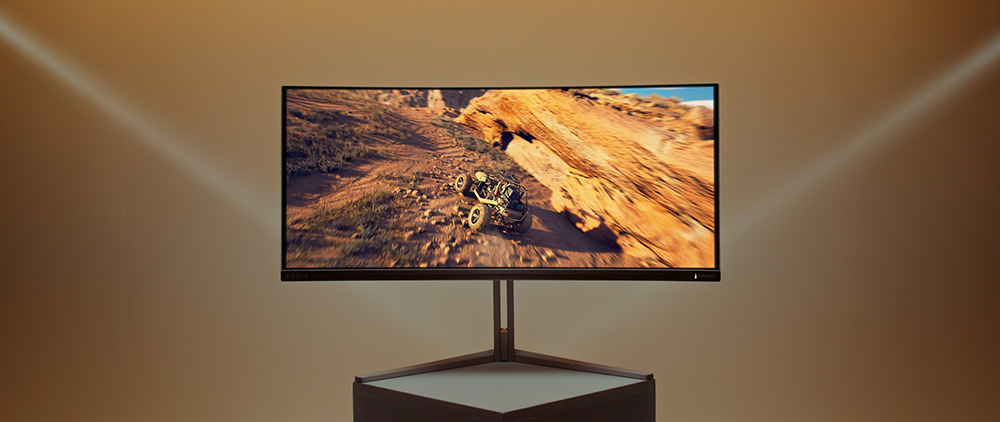
The 34M2C8600 has now been launched as of late February 2023 at a price of £1,149 GBP in the UK, quite a lot lower than the original price discussed at the Oct 2022 launch even which is good news. It is starting to appear on regional Amazon pages, including already in Germany. You can check availability and pricing on Amazon for your region here (affiliate link). Expect this to appear on more regional Amazon pages very soon.
More info: Philips product page
42″ 4K OLED Monitor – 42M2N8900

Another model in their 8000 series is the 42M2N8900, a 42″ sized monitor with a 3840 x 2160 “4K” resolution OLED panel. This is an alternative to already available screens like the LG 42C2 and Asus ROG Swift PG42UQ (both reviewed, and also both compared in our shoot out here). This screen offers a flat format and has a 0.1ms G2G response time, 1 million:1 contrast ratio, 178/178 viewing angles, 10-bit colour depth and a wide colour gamut covering ~98% DCI-P3 and ~126% sRGB.
The screen has the same 138Hz refresh rate as the Asus PG42UQ, and uses adaptive-sync for VRR. Being based on an OLED panel this model has per-pixel dimming allowing for excellent HDR performance, true blacks and a near-infinite contrast ratio. There was no mention of peak brightness capability but we expect it to be in the same ballpark as the LG and Asus models given it’s based on the same LG.Display RGBW OLED panel. This model includes a matte AG coating like the Asus display does. Lots more discussion about the pros and cons of the coating in our shoot out video.
Impressively this model also includes a very adjustable stand and looks and feels a lot more like a monitor than the LG C2 and even the Asus PG42UQ. The stand offers a nice stable and sturdy base, but includes decent tilt, height and swivel adjustments. This makes it far more versatile than the LG and Asus models which have no adjustments at all (LG) and only a very limited tilt (Asus). It looks a lot more like a large monitor than it does a TV.
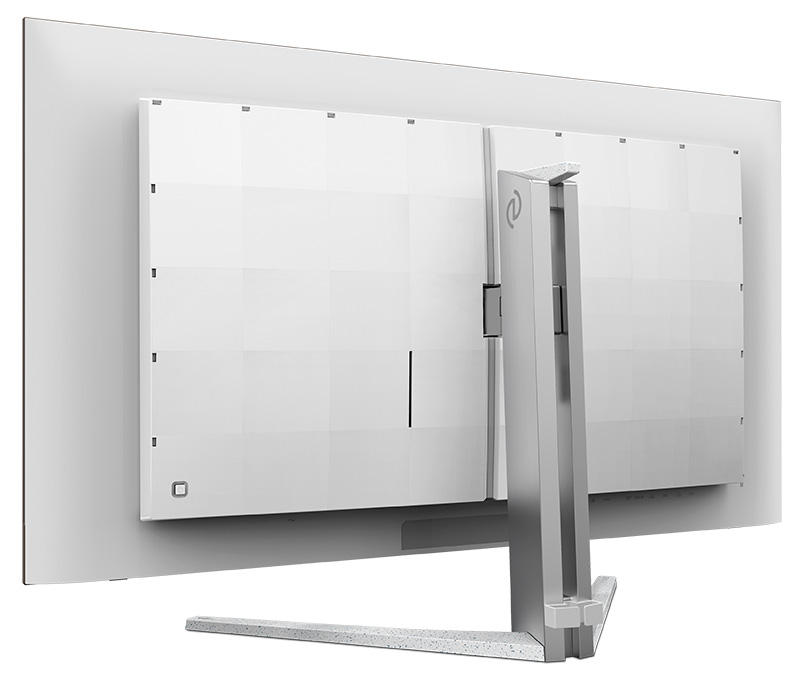
For connectivity there are 1x DisplayPort 1.4 and 2x HDMI 2.1, but Philips have also included 1x USB type-C port (with DP alt mode and 90W power delivery) which is useful. There are also 4x USB data ports, a headphone jack and built in speakers on this model.
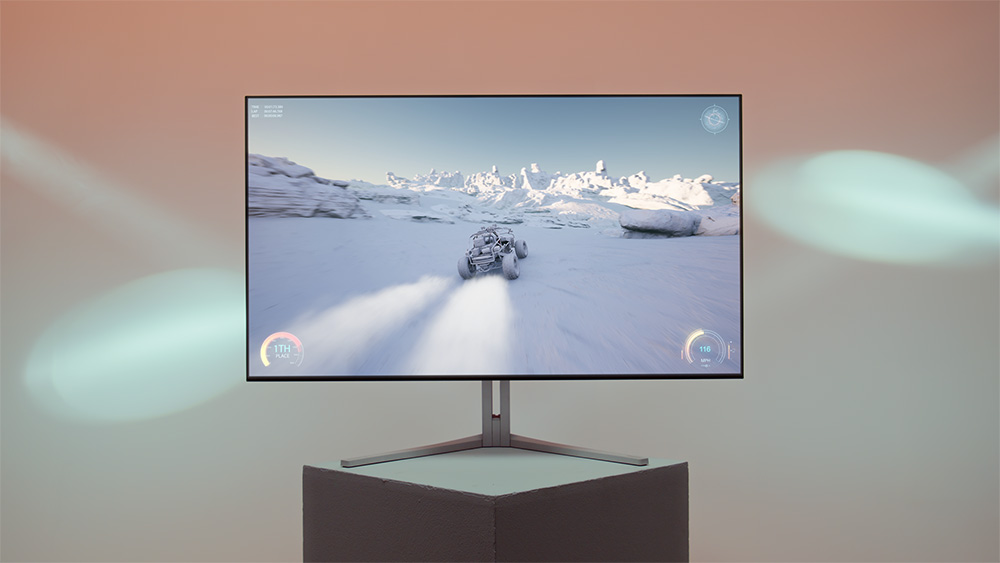
The 42M2N8900 has now been launched as of late February 2023 at a price of £1,499 GBP in the UK, quite a lot lower than the original price discussed at the Oct 2022 launch even which is good news but still a high price relative to some 42″ OLED competitors. It is starting to appear on regional Amazon pages, including already in Germany and France. You can check availability and pricing on Amazon for your region here (affiliate link). Expect this to appear on more regional Amazon pages very soon.
More info: Philips product page
34″ ultrawide Mini LED – 34M2C7600MV
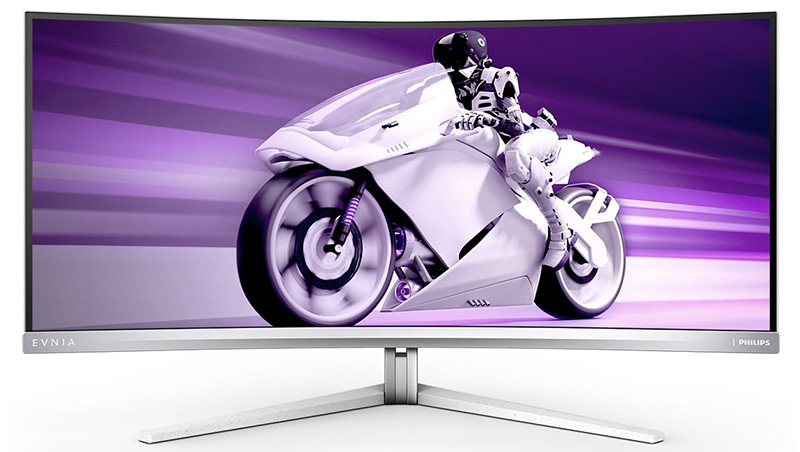
Another model in the series is the 34M2C7600MV (right, these names are getting a bit silly now!). This is a 34″ ultrawide model based on a modestly curved 1500R VA technology panel, and featuring a high end Mini LED backlight with 1,152 local dimming zones. It has a 3440 x 1440 resolution and conforms to the VESA DisplayHDR 1400 standard, which includes a peak brightness of 1400 nits+ along with the required wide colour gamut and 10-bit colour depth support. There’s a 165Hz high refresh rate, supported by adaptive-sync VRR.

In other specs there is a 2.5ms G2G response time, 3000:1 contrast ratio, 720 nits brightness (SDR!), 178/178 viewing angles, 8-bit +FRC colour depth and a wide colour gamut covering 97% DCI-P3 and ~140% sRGB. There is USB type-C connectivity included with DP Alt mode and 90W power delivery, along with 1x DisplayPort 1.4 and 2x HDMI 2.1 connections. There is also a KVM function, PiP/PbP support, 4x USB data ports and an adjustable stand with tilt, height and swivel. There are also integrated 2 x 5W speakers with DTS sound and a headphone output.
The 34M2C7600MV is available in most European regions now. You can check latest pricing and availability from Amazon in your region here (affiliate link).
27″ VA Curved 240Hz – 27M2C5500W
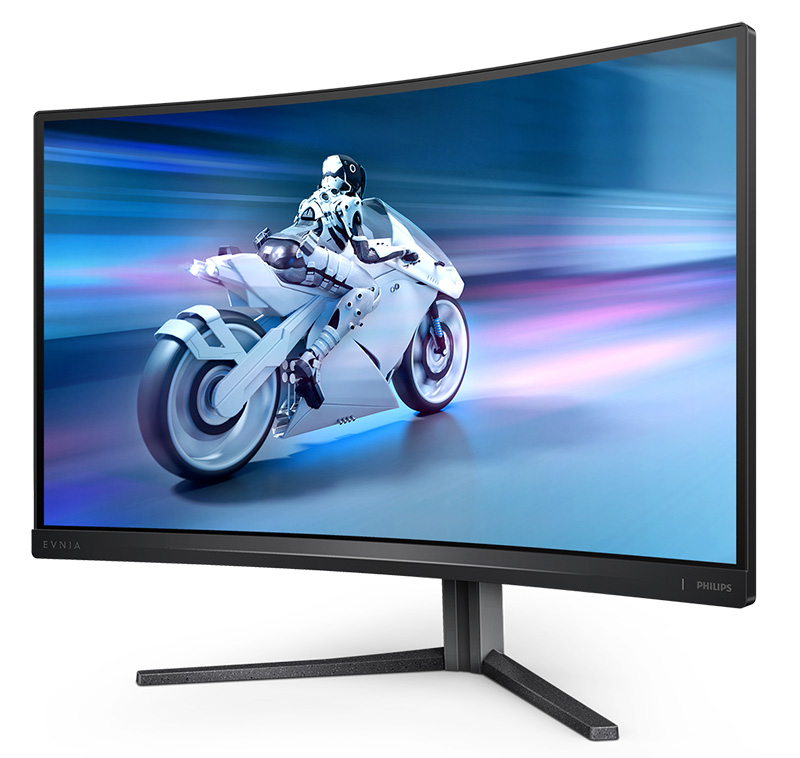
The only model being showcased from their bottom end 5000 series was the 27″ 27M2C5500W. This is 27″ in size and has a curved VA technology panel with 2560 x 1440 resolution. It has a steep 1000R curvature and has a high refresh rate of 240Hz. Unlike the other models here, this screen has a dark grey design instead of white. There are 1x DisplayPort 1.4, 2x HDMI 2.0 and 4x USB data ports provided for connectivity.
The 27M2C5500W is now available in most European regions, including at a price of £429.99 in the UK. You can check availability and pricing for your region from Amazon here (affiliate link).
We may earn a commission if you purchase from our affiliate links in this article- TFTCentral is a participant in the Amazon Services LLC Associates Programme, an affiliate advertising programme designed to provide a means for sites to earn advertising fees by advertising and linking to Amazon.com, Amazon.co.uk, Amazon.de, Amazon.ca and other Amazon stores worldwide. We also participate in a similar scheme for Overclockers.co.uk, Newegg, Bestbuy , B&H and some manufacturers.
Stay up to date
 |  |  |  |
| Browser Alerts | Follow on X | Subscribe on YouTube | Support Us |
[Round-up] All the monitor news from CES 2026
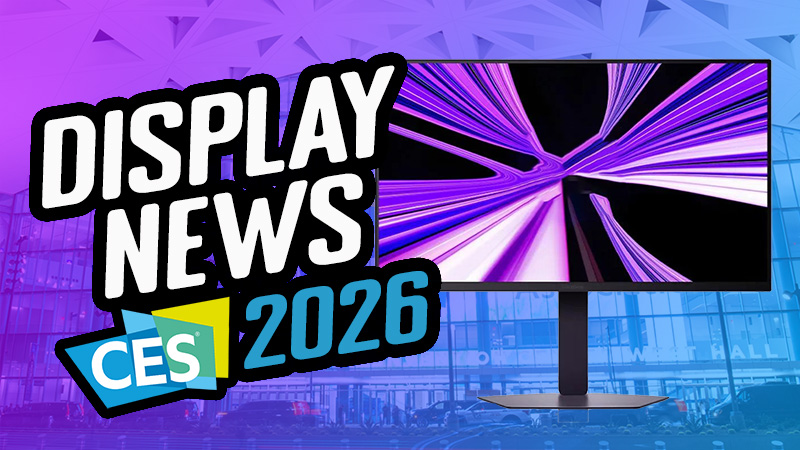
Popular Trending News
 The LG 39GX950B is the World First 39″ 5K2K OLED Monitor to be Announced December 26, 2025 Ahead of CES in a couple of week’s time, LG Electronics have unveiled their line-up of new monitors that will be on show at the event. They also announced the global launch of their new premium gaming monitor brand, UltraGear…
The LG 39GX950B is the World First 39″ 5K2K OLED Monitor to be Announced December 26, 2025 Ahead of CES in a couple of week’s time, LG Electronics have unveiled their line-up of new monitors that will be on show at the event. They also announced the global launch of their new premium gaming monitor brand, UltraGear… LG Announce the 32GX870B, Their First 32″ 4K Tandem WOLED Monitor December 31, 2025 LG have released some details about another new monitor that will be launched in 2026 and showcased at CES next week. The 32GX870B is a 32″ sized screen with a 3840 x 2160 “4K” resolution and 240Hz native refresh rate,…
LG Announce the 32GX870B, Their First 32″ 4K Tandem WOLED Monitor December 31, 2025 LG have released some details about another new monitor that will be launched in 2026 and showcased at CES next week. The 32GX870B is a 32″ sized screen with a 3840 x 2160 “4K” resolution and 240Hz native refresh rate,… Asus Unveil the ROG Swift PG27UCWM with a 27″ 4K Tandem WOLED Panel and RGB-stripe Pixel Layout January 4, 2026 Asus teased the arrival of this screen recently on their social media channels and we can now unveil official information about this exciting new OLED monitor that will be on show at CES this week. The ROG Swift PG27UCWM is…
Asus Unveil the ROG Swift PG27UCWM with a 27″ 4K Tandem WOLED Panel and RGB-stripe Pixel Layout January 4, 2026 Asus teased the arrival of this screen recently on their social media channels and we can now unveil official information about this exciting new OLED monitor that will be on show at CES this week. The ROG Swift PG27UCWM is… LG 27GM950B 5K Monitor Announced with a 2,304-zone Mini LED Backlight December 26, 2025 Ahead of CES in a couple of week’s time, LG Electronics have unveiled their line-up of new monitors that will be on show at the event. They also announced the global launch of their new premium gaming monitor brand, UltraGear…
LG 27GM950B 5K Monitor Announced with a 2,304-zone Mini LED Backlight December 26, 2025 Ahead of CES in a couple of week’s time, LG Electronics have unveiled their line-up of new monitors that will be on show at the event. They also announced the global launch of their new premium gaming monitor brand, UltraGear… Gigabyte Unveil the MO34WQC36 with a 34″ 360Hz Ultrawide 5th Gen QD-OLED Panel January 7, 2026 As part of CES this week, Gigabyte have unveiled their new MO34WQC36 monitor. It’s a 34” ultrawide screen built around Samsung Displays brand-new 5th-Gen QD-OLED panel technology with a 3440 x 1440 resolution and 360Hz refresh rate which we’ve seen and…
Gigabyte Unveil the MO34WQC36 with a 34″ 360Hz Ultrawide 5th Gen QD-OLED Panel January 7, 2026 As part of CES this week, Gigabyte have unveiled their new MO34WQC36 monitor. It’s a 34” ultrawide screen built around Samsung Displays brand-new 5th-Gen QD-OLED panel technology with a 3440 x 1440 resolution and 360Hz refresh rate which we’ve seen and…
